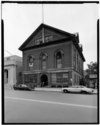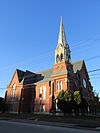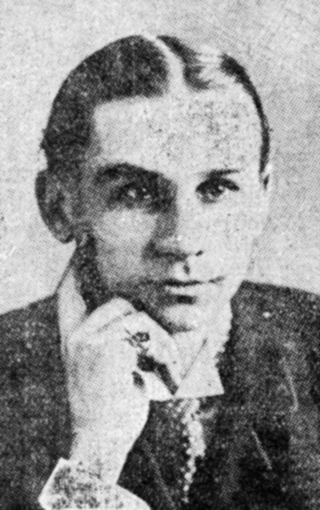
Richard Clipston Sturgis, generally known as R. Clipston Sturgis, was an American architect based in Boston, Massachusetts.

George Frederick Meacham was an architect in the Boston, Massachusetts, area in the 19th century. He is notable for designing Boston's Public Garden, the Massachusetts Bicycle Club, and churches, homes, and monuments in greater Boston and elsewhere in New England.
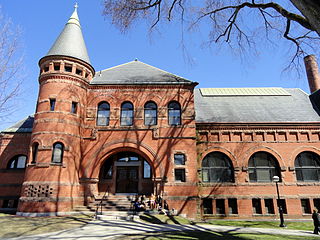
Samuel J.F. Thayer (1842–1893) was an American architect, notable for designing buildings such as the Providence City Hall and the Cathedral of St. George, as well as the town halls of Brookline, Stoughton, and Methuen, Massachusetts. He was part of the architecture firms, Martin & Thayer and Ropes & Thayer.

Charles Kirk Kirby, was an American architect who practiced in Massachusetts, Maine, and California.
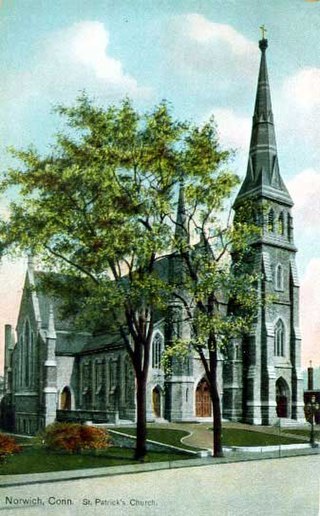
James Murphy, FAIA, (1834–1907) was an Irish-American architect active in late-nineteenth- and early twentieth-century New England, who designed numerous Roman Catholic churches and related structures.

Elbridge Boyden (1810–1898) was a prominent 19th-century American architect from Worcester, Massachusetts, who designed numerous civil and public buildings throughout New England and other parts of the United States. Perhaps his best known works are the Taunton State Hospital (1851) and Mechanics Hall (1855) in Worcester.

Shepard S. Woodcock (1824–1910) was an American architect practicing in Boston, Massachusetts during the second half of the nineteenth century.

John A. Fox (1835–1920) was an American architect. Fox practiced in Boston for fifty years and is best remembered for his works in the Stick Style.

George Milford Harding (1827–1910) was an American architect who practiced in nineteenth-century Massachusetts, New Hampshire, and Maine.

Charles Edward Parker (1826-1890) was an American architect from Boston, Massachusetts.

C. Willis Damon (1850-1916) was an American architect from Haverhill, Massachusetts.
Frank W. Angell (1851–1943) was an American architect practicing in Providence, Rhode Island.
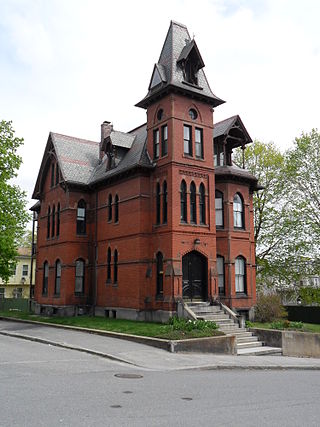
Amos Porter Cutting (1839–1896) was an American architect from Worcester, Massachusetts.

J. Williams Beal, Sons, successor to the office of J. Williams Beal, was a successful architectural firm based in Boston, Massachusetts. Established in 1920 by the sons of the late architect Beal, it remained in business into the 1980s.
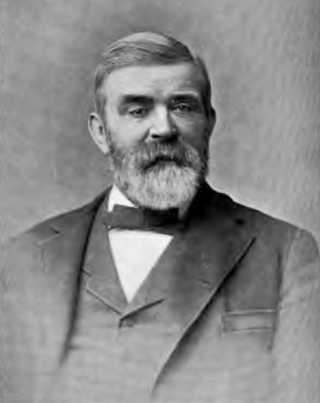
Henry Warren Rogers (1831-1915) was an American architect practicing during the late nineteenth and early twentieth centuries in Lynn, Massachusetts.
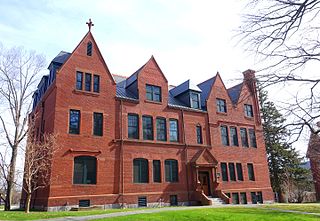
William C. Brocklesby (1847-1910) was an American architect practicing in Hartford, Connecticut.

Newhall & Blevins was an American architecture firm based in Boston, Massachusetts, active from 1903 to 1933. It was the partnership of architects Louis C. Newhall (1869–1925) and Albert H. Blevins (1874–1946). Newhall established a practice alone in 1901, forming his partnership with Blevins in 1903. They were partners until 1919, and remained associated until the death of Newhall in 1925. After Newhall's death, the firm was reorganized as Newhall & Blevins Inc. with John W. Reth (1888–1940) as president and treasurer. Reth was an engineer and construction supervisor who had been with Newhall & Blevins for several years. The firm was dissolved in 1933, apparently due to financial troubles.
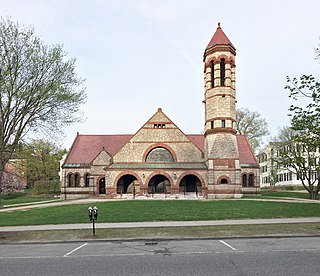
John Lyman Faxon (1851–1918) was an American architect practicing in Boston, Massachusetts, during the late nineteenth and early twentieth centuries. Three of his buildings, the First Baptist Church of Newton (1888), the First Congregational Church of Detroit (1889–91) and the former East Boston High School (1898–1901), have been listed on the United States National Register of Historic Places.
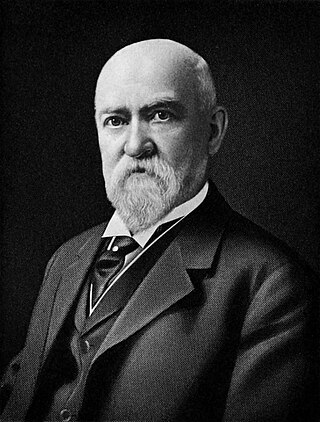
Eugene C. Gardner (1836–1915) was an American architect and author of Springfield, Massachusetts. Gardner was noted both for the architectural influence of his extensive practice as well as his writings on the American home. Gardner was the most notable architect of Springfield.

Otis A. Merrill was an American architect. In association with various partners he practiced architecture in Lowell, Massachusetts, from 1873 until 1900.



